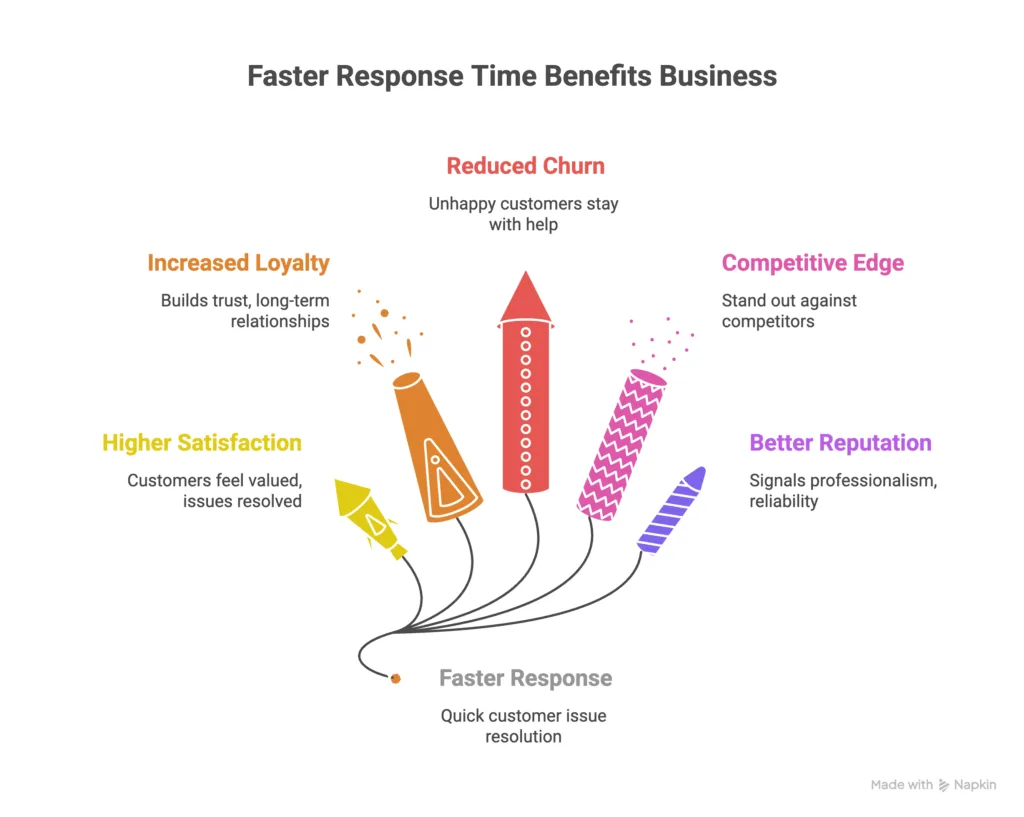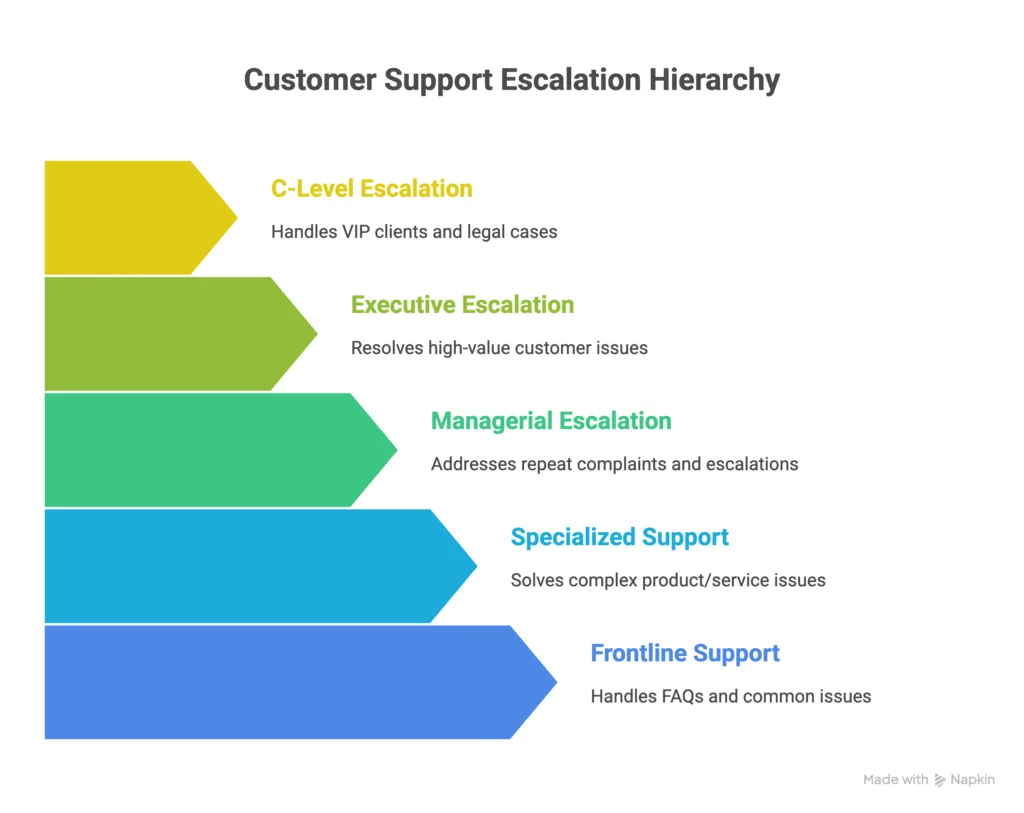Boost customer satisfaction with proven live chat best practices. Learn how support teams can improve response times, personalize interactions, and deliver seamless experiences.
Everything in this world is instantaneous now.
You order food; it gets delivered in under 20 minutes.
You order your favorite dress, there’s a good chance your e-commerce platform provides same-day delivery for you to get your wishlist turned into reality.
From pondering a review to posting it on social media, to planning a trip and asking your AI chatbot to give you an entire itinerary.
You think of it, and there’s a medium where everything happens in an instant.
Which is why, when it comes to even customer support, customers also expect the same immediate validation in responses, just like everything else in their lives. And, it’s not without a good reason, as 60% of customers have reported coming back to the website to complete their purchase if there’s a live chat service available.
And that’s half a story, as live chat increases the chances of conversion rates and revenue by 3.84% and ~6% respectively.
This tells us that having live chat support is not only limited to an optional fulcrum to your already excellent customer support, it’s a necessity which makes you more relevant and, most importantly, competitive in the market.
In this write-up, we are going to focus on the optics and the real-world impact that make live chat an asset to your organization, throwing light on the live chat best practices that make the titular service a decisive advantage and not a liability.

1st Practice: The importance of response time
When an agent responds to a live text to the user, the user feels valued and registers happy emotions that act as a precursor to how good the following conversation will pan out.

With 77% of customers now expecting an immediate response as soon as they contact a company’s customer service, live chat customer service best practices enable the organization to keep up with the assurance of a customer-first policy and, in turn, solidify a company’s strong brand reputation.
The upside of such proactive measures is metrics like enhanced customer satisfaction ratings and reduced abandonment rates, which are certainly a boon, especially for an upcoming startup or a new e-commerce enterprise.

2nd Practice: Be Proactive, Not Just Reactive
One of the key things is to gauge what the customer’s intent is.
Let’s take an instance where a customer is all done with the selection of a product from the website, and just before purchasing, takes a U-turn. Now, this is a scenario where a possible sale is left dangling.
This is where an agent can reach out to the customer via a live chat invitation to understand what can be done in order to close the conversion.
A well-timed prompt to a user can help you convert a significant portion of the 70% abandonment rate of online carts, which in itself can be a substantial boost to your annual sales figure.
Auto-triage FAQs, route priority chats, and hit SLAs every hour.
To ensure that your outreach is more effective in its purpose, you can keep these pointers in mind:
- Use the customer’s name
- Give contextual responses
- Provide recommendations
- Ensure empathy
- Offer special discounts
- If possible, leverage past interaction

3rd Practice: Your chat widget should be VISIBLE!!
This is more of a UI practice that should be kept in mind from the very moment of website designing.
Your live chat widget shouldn’t be some part of a treasure hunt game for a user to find. And, if you are wondering why this is so important, let’s lay out a stat for you: 75% of consumers judge the credibility of a company purely based on its website.
This means that bad navigation and poor design run the risk of losing out on potential customers.
Some of the best customer-first organizations ensure that their users can find any help they require to make their purchase.
This covers the placement of the live chat widget on product pages, checkout, support, and contact us pages.

The above images perfectly represent the principles of what should be included in a clean user interface.
All the snapshots above clearly signal the presence of the live chat widget, which makes it easier for the user to find out and interact with the support if they deem it necessary.
4th Practice: Work on Quality of Interaction
“Empathy is the greatest virtue. From it, all virtues flow. Without it, all virtues are an act.”
Eric Zorn
Your agents have to remember that they are talking to a customer who’s filled with emotions just like them. Company directives should focus on maintaining a conversation in a polite manner, fueled by empathy.
Agents should allow users to convey their complete point of view and then give contextual responses that generate the possibility of conversion.
This is important, as customers should not feel like they are chatting with a chatbot that is working from its repository of use case scripts. The use of certain words can convey to an agent what the customer is seeking as a resolution.
This is why the best live chat practices focus on balancing efficiency with empathy.
Real-time routing + perfect replies + AI suggestions.
5th Practice: Multi-Chat Handling & Escalation Management
In a perfect world, there would have been no complaints to look after. But the times have changed, and how. With the boom of digitalization, every customer is now logged into the internet and the ecosystem of applications it offers.
Want it in numbers? Sure.
As of February 2025, the numbers had reached 5.56 billion individuals worldwide. That is 67.9% of the global population.
So, it’s given that agents may need to juggle multiple live chats, and during such situations, the quality does stand a chance to get impacted.
Stakeholders, to avoid any degradation in their services, set a limit on the number of interactions each agent will handle.
Companies with the best satisfaction ratings of >90% have reported their average chat duration to be a maximum of 11 minutes and 47 seconds.
The same clarity is also expected when it comes to the escalation matrix.
An enterprise should specify escalation paths for complex issues as and when it is required. The directives should cover when to loop in a senior official or when to switch to a different channel in case of an elongated conversation.
This helps keep the response time intact while keeping customers happy with the coherence of action plans.

6th Practice: Integration with Other Support Channels & Tools
Customers acknowledge a well-rounded support system.
This means that when interacting with a live chat system, an agent, if required, can make use of the smart integration done with CRM tools. Other integration options include a knowledge base and other self-help options, like sharing FAQs.
When a CRM representative has the entire context of a customer’s relationship with a brand, it gives them a clear view of how to manage a situation accordingly.
Pre-chat data, past purchases info, and multiple visited sessions allow the agent to know the journey the customer has had, and what all can be done to make the conversion possible.
This is another area where live chat support best practices in desk support can significantly enhance both efficiency and customer satisfaction.
7th Practice: Use Analytics & Feedback to Continuously Improve
“A rolling stone gathers no moss.”
The adage perfectly captures the continuous need to improve the quality of services a company provides.
For agents, monitoring metrics like first response time, average handling time, customer satisfaction (CSAT), and abandonment rate can tell about the areas where improvements can be made.
Garnering feedback from customers is one of the strongest insights to gather if stakeholders want to improve their services and products, with 85% of users willing to provide feedback when the experience is good and 81% when it’s not.
When a company invests in analytics and studies the historical impact of its operations, there’s always a good chance that its customer retention and engagement metrics are better than those of its competitors.

8th Practice: Using AI & Automation with Human Touch
Chatbots have indeed made life much easier for companies to handle multiple tickets in a day.
And while automation has taken a considerable load off an organization, especially when it comes to generic queries, it is essential to know not to be entirely dependent on it.
Finetuning a perfect balance between human agents and a chatbot is the mantra for businesses to maintain the scale and quality of their responses.
This helps you provide not only the best support but also ensures that churn rate and abandonment rate are low.
9th Practice: Ensure Security and Trust of users
Your customers want security while having a conversation with you. This means not only employing the best SSL encryption practices but also being transparent about how you will use customers’ data.
With the rising concerns of digital scams, your agents should instill a culture where they don’t ask for information other than what is necessary. If any personal data is required, inform the user directly and obtain their approval before using the information for relevant actions.
This is one of the core live chat best practices that helps a company maintain a good standing with its customers.
Live chat provides a sense of quick validation that customers warrant while being in a session with your brand. This not only makes them feel wanted but also gives your services a certain human touch that builds reputation and a good standing in the market.
Your agents and leadership should also treat live chat not just as another cog in the support system, but as a means to stay relevant and a tool to create a brand perception that is there with its customer through thick and thin.
Cap concurrency, queue smartly, keep quality high./div>
FAQ
1.What are some Live Chat best practices for customer support?
Most notable live chat best practices include reducing response time, using proactive chat invitations based on customers’ recent sessions, ensuring that the chat widget is visible, focusing on empathetic communication, and balancing AI automation with human agents.
When a company focuses on the foundational principles of live chat customer service best practices, it positions itself to garner a higher customer satisfaction rate and better conversion.
2. Why is response time important in Live Chat support?
Customers treat fast response time as a virtue. Companies that keep this principle well-thought-out into action often cover bases like assigning agents appropriately, not overloading multiple tickets, and using automation for FAQs and general queries. This reduces abandonment rates and improves satisfaction scores.
3. Should companies rely on chatbots or human agents for Live Chat?
There should be an effective mix of both. While human agents can’t work tirelessly with chatbots making up for their 24/7 availability, chatbots, on the other hand, can’t handle complex issues.
Also, overimplementation of AI and chatbot services runs the risk of lacking empathy in conversations, which can further drive away a customer.
The best approach is combining automation with a human touch. This is a hallmark of live chat support best practices in desk support, to ensure scale and quality.
4. How can analytics improve Live Chat performance?
Keeping tabs on metrics like First Response Time (FRT), Average Handling Time (AHT), and Customer Satisfaction Score (CSAT) allows businesses to find gaps in their operations and optimize performance accordingly.
Companies that apply live chat analytics often see improved customer retention and long-term brand trust.
5. How can businesses use Live Chat to increase conversions?
A live chat session can allow agents to initiate a conversation with users proactively. With reminders, discounts, and personalized recommendations, companies can easily recover lost sales.